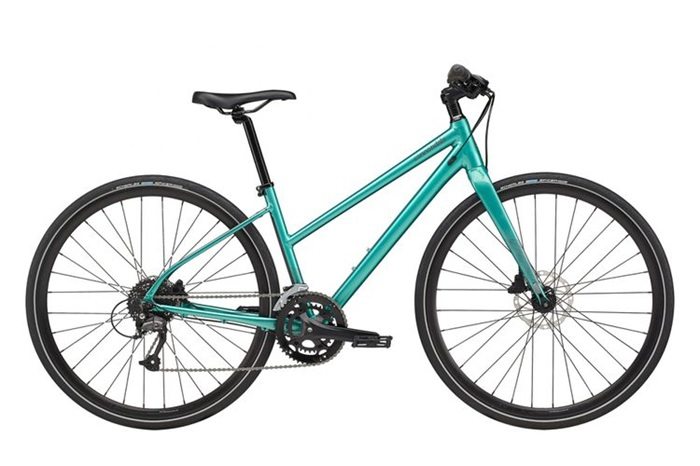Choosing the best bike for a woman depends on many factors. Women have different body shapes, riding styles, and preferences. A good bike should fit well, feel comfortable, and match the type of riding you plan to do. Some women prefer lightweight road bikes, while others need sturdy mountain bikes or practical city bikes. The best bike is the one that suits your needs.
Comfort and Fit Matter Most
Women’s bodies are different from men’s. Generally, women have shorter torsos, longer legs, and narrower shoulders. A bike designed for women often has a shorter top tube, a wider saddle, and handlebars that are easier to reach. A well-fitted bike prevents back pain, sore wrists, and knee strain.
Many brands offer women-specific bikes. These bikes have frames and components adjusted for female proportions. However, some women find unisex or men’s bikes comfortable too. The key is to test different models. Stand over the bike—there should be about an inch of space between you and the top tube. When sitting, your knees should not hit the handlebars, and your feet should touch the ground easily.
Types of Bikes for Women
There are many bike types, each suited for different riding styles.
Road Bikes are fast and lightweight. They are best for paved roads, long-distance rides, and racing. Women’s road bikes often have narrower handlebars and shorter cranks. If you enjoy speed and fitness riding, a road bike is a great choice.
Mountain Bikes are strong and durable. They handle rough trails, rocks, and dirt paths. Women’s mountain bikes may have softer suspension and lighter frames. If you love off-road adventures, a mountain bike is ideal.
Hybrid Bikes mix features of road and mountain bikes. They are comfortable for city riding, light trails, and commuting. Many women prefer hybrids because they are versatile and easy to handle.
City Bikes are designed for everyday use. They often come with baskets, racks, and fenders. These bikes are perfect for short trips, errands, and casual riding. They usually have upright handlebars for a relaxed posture.
Electric Bikes (e-bikes) are growing in popularity. They help with pedaling, making riding easier, especially on hills or long distances. Many women choose e-bikes for commuting or leisure rides.
Frame Material and Weight
Bike frames are made from different materials, each with pros and cons.
Aluminum is light, affordable, and stiff. It’s common in many women’s bikes. Aluminum frames are good for road and hybrid bikes.
Carbon Fiber is very light and absorbs road vibrations well. It’s often used in high-end road and mountain bikes. However, carbon bikes are expensive.
Steel is strong and durable. It provides a smooth ride but is heavier than aluminum or carbon. Steel bikes are great for city and touring bikes.
Titanium is lightweight, strong, and corrosion-resistant. It’s rare and expensive, mostly found in premium bikes.
The best material depends on your budget and riding style. Lightweight bikes are easier to carry and faster, but they may cost more. Heavier bikes are more stable and often cheaper.
Saddle and Handlebar Comfort
Women’s saddles are usually wider to support the sit bones. A good saddle prevents discomfort on long rides. Some women prefer gel-padded or cut-out saddles for extra comfort.
Handlebars should allow a natural grip. Drop bars (on road bikes) offer multiple hand positions. Flat bars (on hybrids and mountain bikes) are easier to control. Riser bars (on city bikes) keep you upright for a relaxed ride.
Brakes and Gears
Bikes come with different braking systems.
Rim Brakes are common and easy to maintain. They work well in dry conditions but may struggle in rain.
Disc Brakes provide strong stopping power in all weather. They are more reliable but cost more.
Gears help on hills and long rides. More gears give better control, but they add weight. A simple 7-speed bike is enough for city riding. Mountain and road bikes often have 18+ gears for varied terrain.
Wheel Size Matters
700c Wheels are standard for road and hybrid bikes. They roll fast on smooth surfaces.
26-inch Wheels are common on older mountain bikes. They are strong but slower.
27.5-inch and 29-inch Wheels are used in modern mountain bikes. Bigger wheels roll over obstacles easier.
Smaller wheels (like 24-inch) are found on some women’s bikes for better control.
Budget and Brand Choices
Bikes range from cheap to very expensive. A good entry-level bike costs around 500−1000. High-end models can go over $3000. Well-known brands like Trek, Specialized, Giant, and Liv (by Giant) offer quality women’s bikes.
Test-riding different bikes helps you find the best one. Visit local bike shops and ask for advice. A professional bike fitting ensures comfort and efficiency.
Conclusion
The best bike for a woman is the one that fits well and matches her riding style. Comfort, frame size, and bike type are the most important factors. Whether you need a fast road bike, a tough mountain bike, or a practical city bike, there’s a perfect option for you. Take your time, try different models, and choose a bike that makes riding enjoyable. Happy cycling!
Related topics:
- WHAT IS THE BEST BIKE FOR A WOMAN?
- IS CYCLING GOOD FOR WOMEN?
- BONNIE TU RETIRES AFTER OVER 30 YEARS AT GIANT GROUP

